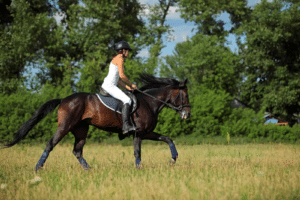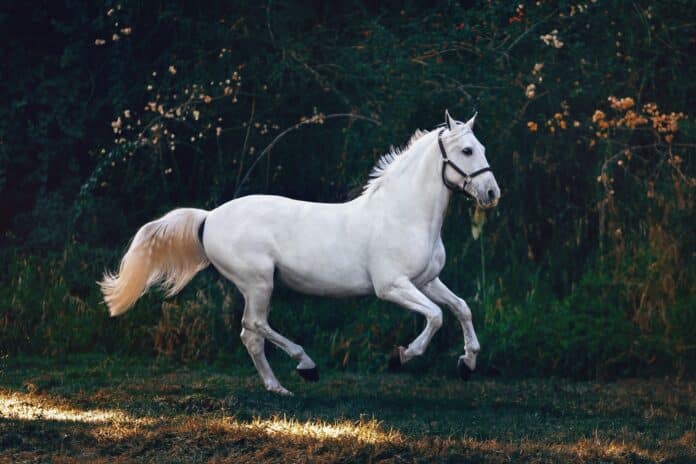As the temperature begins to drop and those golden summer nights fall into grey skies, it’s time to start preparing for the winter months to draw in. As the autumn season comes upon us, it’s time to review those nutritional needs, fix up those shelters and get your equines ready for the colder months.
While horses are extremely adaptive to changing weather conditions, in order to keep them fit and healthy, we must make a few simple changes to their routine that will gradually make the transition into autumn stress-free for both the owner and their four-legged friend.
If you’re new to the horse care game or are simply looking for some new effective strategies to add to your conditioning routine, fear not, we have you covered. Read on to find out about the three key changes you need to make to your routine for a successful autumn transition with your equines.
Prioritise Those Nutritional Needs
As autumn arrives, so does that morning frost. As the grass begins to lose its nutritional quality and pastures begin to contain limited forage, horse owners should think about investing in forage source supplements or alternatively an all in one pelleted feed.
Introducing a good chaff mix into their diet is also a great way to keep that forage content high while also promoting healthy digestion and reducing bolting of the feed. In essence, regulating your horse’s diet as the autumn season takes hold is vital, especially if you have equines that continue to turn out regularly, as the grass will continue to lack those essential vitamins and minerals.
As you prepare your feed, storage is also crucial if you want to keep your hay, chuff and feed pellets dry. Double-check and plaster up those storage areas to reduce the threat of rain leaks, and organise your storage in warm barns and sheds if you can. Better still, keep your hay stacked and off of the floor to promote successful airflow and to prevent damp and mould.
Keep That Fitness In Check
Conditioning your horse before the colder months set in is always a must, as they are not ridden as frequently during the autumn/winter season. Before the cold temperatures arrive, monitor your horse’s habits during exercises and workouts. This gives you the chance to spot potential fitness problems before the quieter season, such as stiffness or cardiovascular hindrance.

(Source: The Horse)
If your horse is prone to health problems or is in the younger or older category, it may not be used to higher levels of physical activity and are more likely to struggle in the cooler months. To maintain their fitness levels during the colder temperatures, make sure to keep pursuing that lighter exercise to keep stiffness at bay.
Our recommendation for stabled equines is at least 30 minutes of light exercise per day with a crucial warm-up to prevent the chances of injury during riding time.
If you’re worried about your warm-up technique, there are a number of different warm-up exercises that can be used to get your horse’s musculoskeletal system in gear on a cold morning. The intensity of exercise will depend heavily on the condition and age of the horse, but for most, a gentle 15-20 minute trot is a great way to loosen up overnight stiffness.
If you want to be extra cautious, especially as the winter frost rolls in, why not take the air temperature before and during warm-up. As the weather changes, muscles may take longer to reach full working capacity in the cold, so a heat lamp or heated blanket is a great addition to the warming up routine if you want to keep those muscles healthy during training.
Keep On Top Of Transitional Maintenance
This goes without saying, but transitional maintenance is probably the most important step you can take towards improving your horse care this autumn.
For horses that spend most of their time out of the stable, fields need to be in good condition for ultimate safety. Keep fences maintained regularly to prevent gapping, and weathering from harsh winds and don’t forget to look out for weakening rails that horses could escape through.
Also, watch out for that dreaded mud fever. As the wet conditions come into play, the muddy ground can be damaging to your horse’s skin and coat. To prevent this, lay hardcore in any standing areas and invest in some strong mud fever preventatives.
Alongside this, prioritising shelter from rainy conditions is a must for autumnal preparation. Whether you have natural shelters in the form of trees and natural hedge coverage or are looking into introducing man-made sheltering, keeping your horse turnout sheltered from wind and rain is imperative if you want to prevent element damage.
As we move into the autumnal season, like any transition, it’s always best to take it slow in order to keep the horse’s routine intact. Follow these quick and easy steps and create a transition that will make the colder months an easy ride for both you and your equine!
PLEASE SUPPORT US FOR JUST £2 A MONTH https://dorseteye.com/donate/







